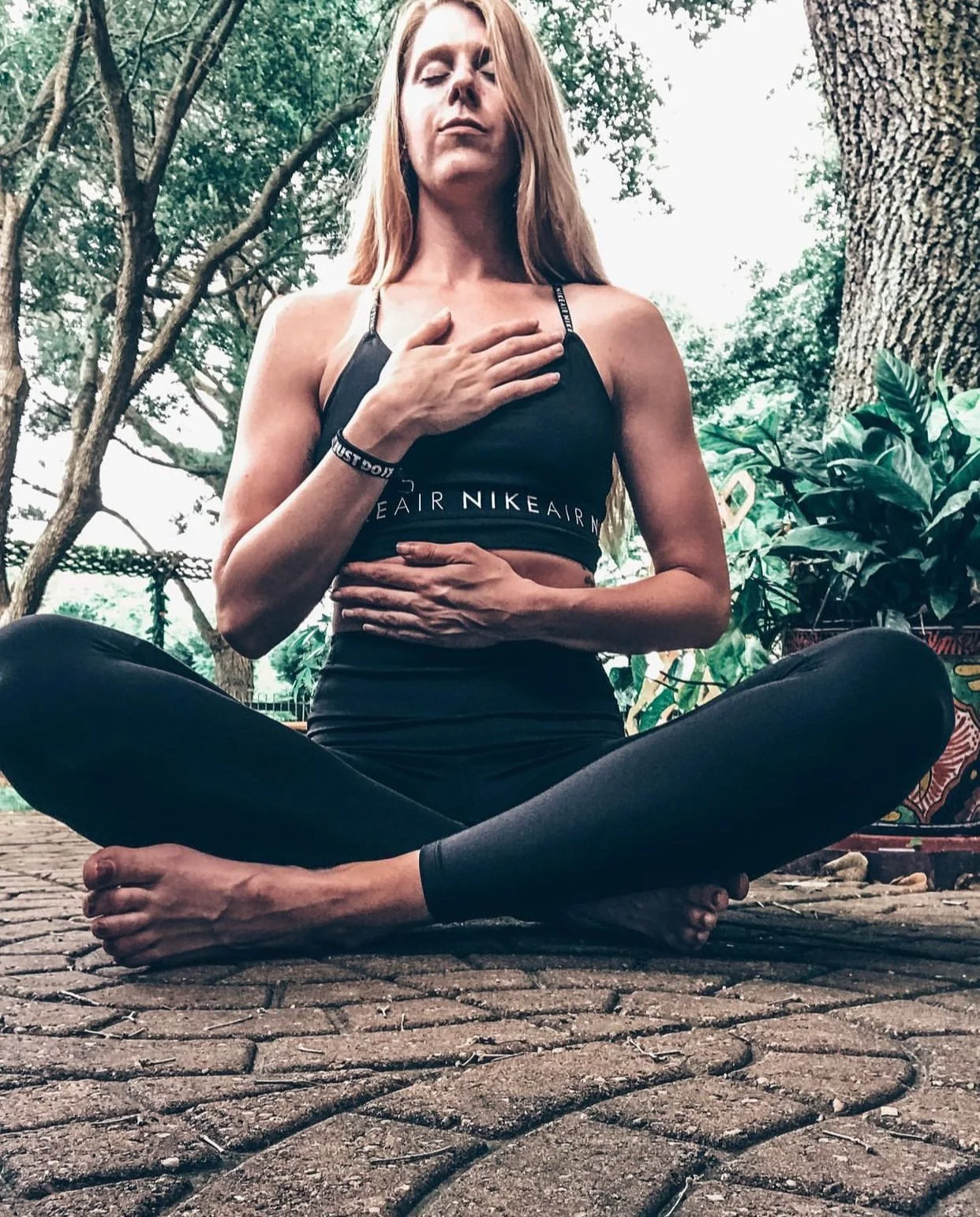Let your breath be your guide: Bridging the gap between breath and movement.
Think about this.
We can go without food for weeks on end if needed, water a few days, but what’s one thing we can’t go without for only a few minutes tops? Air. Being involuntary, we tend to take our breath for granted, and not give it second thought throughout the day. There is nothing more essential to our health and wellbeing than our breath. So, how do you breathe? When was the last time you even thought about your breath?
We take air in, and let it out, 25,000 times a day.
What if I told you that your breath not only keeps you alive, but it dictates emotions, moods, stress levels, and even some health conditions.
Found written in 500 BCE from the Zhou Dynasty in Asia:
“In transporting the breath, the inhalation must be full. When it is full, it has big capacity. When it has big capacity, it can be extended. When it is extended, it can penetrate downward. When it penetrates downward, it will become calmly settled. When it is calmly settled, it will be strong and firm. When it it germinates, it will grow. When it grows, it will retreat upward. When it retreats upward, it will reach the top of the head.”
Research around breathing has become more popular, however civilizations have known the importance of it for centuries. Current research has discovered that our capacity to breath has changed through then long processes of human evolution, and that the way we breathe has gotten markedly worse since the dawn of the Industrial Age. 90% of us is breathing incorrectly and that this failure is either causing or aggravating a laundry list of chronic diseases.
No matter what we eat, how much we exercise, how resilient our genes are, how skinny or young or wise we are— none of it will matter unless we’re breathing correctly. The missing pillar in health very well may be something we give very little thought to- our breath.
Breathing techniques have been practiced in Hinduism, Buddhism, Christianity, and other religions for thousands of years, but only recently have we learned how they can reduce blood pressure, boost athletic performance, and balance the nervous system.
Breathing and moving are two constant components of life.
Breathing is the link to all movement. Respiration supplies the necessary oxygen to enable movement but perhaps more importantly, it is linked with brain activity.
Focused breathing is the foundation for the brain-body connection which can aid in both stress reduction and improving human movement. Whether recovering from injury or trying to stay strong to ward off injury, breathing is the integrated connection to moving better.
The diaphragm muscle contributes to more than just breathing. This one muscle influences swallowing, the bowel and bladder, posture, core strength, pelvic floor function, pain response, mental focus, the nervous system, and digestive health. Breathing regulates our heart rate and blood pressure and balances O2 and CO2. Due to the diaphragm’s vast fascial connections, breathing positively affects our blood vessels, lymphatic flow, muscles, bones, and nerves from the head to the feet.
The diaphragm’s location, connections, and activity make it arguably the most important voluntary muscle in the body as it is necessary to sustain life.
How does breathing better make you move better? Learning to breathe better will improve performance, enhance posture, reduce pain, and balance pressure. In short, better breathing improves both movement efficiency and energy efficiency.
Performance.
Breathing enhances high level performance. Breathing in sports goes beyond cardiovascular endurance. It is used for enhancing acceleration, deceleration, power, speed, and precision. We can breathe to improve mental focus and clarity. Breathing also connects to your sleep patterns, and digestive system both of which play a vital role in performance.
Posture.
Posture means your ability to hold and move through a position. Breathing opens up your rib cage allowing for better mobility in the spine, pelvic girdle, shoulders, and hips. Breathing also engages your core allowing for better control through each movement.
Pain.
Breathing is your connection for stimulating the vagus nerve. This direct access to calming the nervous system is how you can control pain and get your body to move well.
Pressure.
Our core is a pressure system, breathing is how you regulate it. If you are an athlete, postpartum woman, or have not been exercising regularly, the breath can be the key connection to a more functional core.
Breathing exercises to incorporate into your daily routine.
Practicing just a few minutes a day can begin to improve lung function, lower heart rate, blood pressure, and sympathetic stress. Great to do before a big competition, a serious conversation, or sleep.
4-Block Breathing
Navy Seals use this technique to stay calm and focused. Inhale to a count of 4, hold 4, exhale 4, hold 4. Repeat for 5 minutes.
Another variation of Box Breathing to more deeply relax the body that’s especially effective before sleeping is:
Inhale to a count of 4, hold 4, exhale 6, hold 2. Repeat for 5 minutes.


